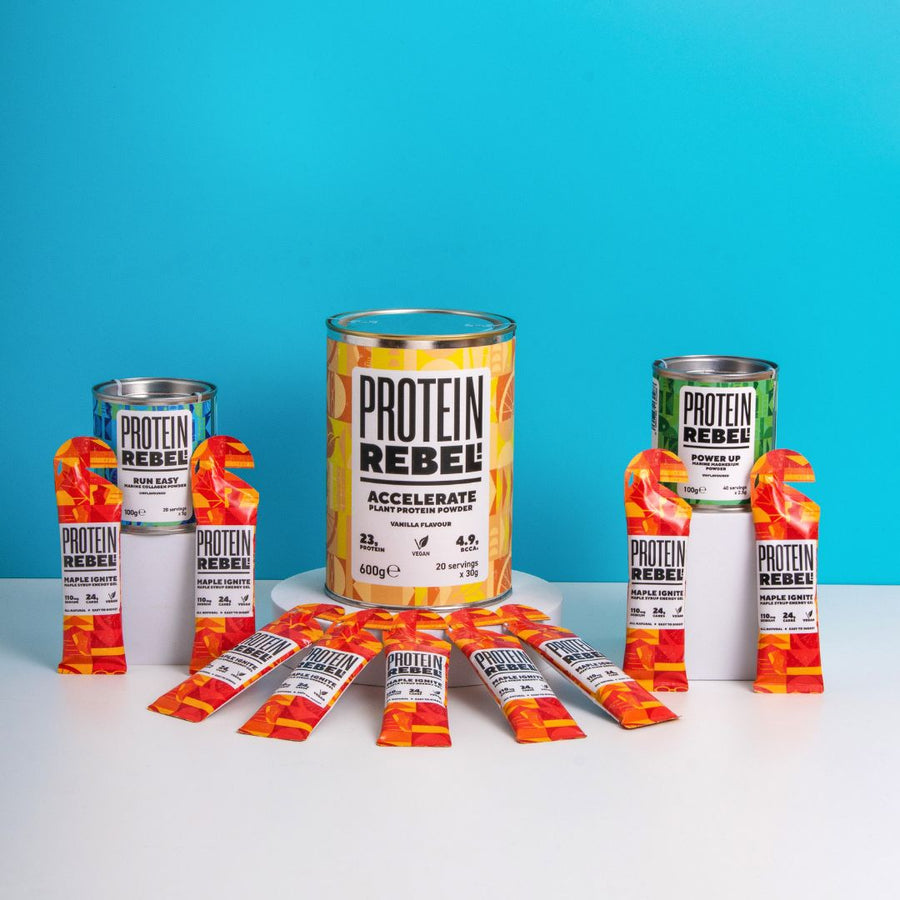How to Fuel for a Marathon
Tom Marriage, Ironman World Champs athlete, is currently training for a sub 2:40 marathon. We asked him to share his marathon nutrition strategy....
As I prepare for my marathon in London this November, I’m reminded that fuelling is just as crucial as training. Having completed several marathons and Ironmans before—my last marathon being a 2:45 finish two years’ ago—I know firsthand that the right nutrition strategy can make all the difference. Here’s how I plan to fuel before, during, and after the race.
Pre-Race Fuelling
In the lead-up to the marathon, I prioritise building glycogen stores. I focus on eating wholesome, organic foods, but it’s during my long training runs that I test my fuelling strategy. On race day, my go-to breakfast will be a bagel with jam a few hours before the start, followed by a banana as I warm up. This combination provides a quick source of carbohydrates, ensuring my energy levels are primed for the race ahead.
During the Race
Fuelling during the marathon is where I’ve learned the importance of timing. I used to start my fuelling too late, which left me depleted toward the end of the race. This year, I’ll be using Protein Rebel's Maple Ignite Energy Gels. These gels are 100% natural, featuring 24g of carbs from a balanced mix of glucose and fructose, along with essential electrolytes. I plan to take my first gel 30 minutes into the race, followed by another every 30-40 minutes. The gentle formula of these gels means they’re easy on the stomach, crucial for maintaining energy without gastrointestinal distress. I’ll be consuming between 2 to 3 gels per hour, depending on how I’m feeling.
Hydration Strategy
Just as important as fuelling is staying hydrated. During a marathon, the body can sweat between 400ml and 2400ml per hour, so I’ll be drinking water at every aid station. Staying ahead of dehydration not only helps with performance but also keeps my focus sharp. I aim to drink about 200ml of fluids every 30 minutes, adjusting as necessary based on the weather and my own sweat rate.
Post-Race Recovery
After crossing the finish line, my recovery begins. I’ll rehydrate with water and electrolytes, replenishing what I’ve lost during the race. While I know I should look for a balanced recovery meal—something like quinoa salad with grilled chicken—I often treat myself to a takeaway and a large milkshake! Additionally, I’ll include Protein Rebel's Accelerate Protein Powder in my post-race routine. This protein powder will help with muscle repair and recovery, ensuring I bounce back stronger for future training.
Key Takeaways for Beginners
-
Start Early: Don’t wait until you feel fatigued to start fuelling. Begin within the first 30 minutes of the race.
-
Experiment in Training: Use your long runs to test different fuelling strategies and find what works best for you.
-
Listen to Your Body: Everyone's nutritional needs are different. Tailor your strategy based on your individual physiology and preferences.
-
Don’t Try New Things on Race Day: Stick to what you know works to avoid any surprises during the marathon.
-
Stay Hydrated: Keep an eye on your fluid intake to prevent dehydration, which can lead to diminished performance.
Fuelling correctly before, during, and after your marathon can truly enhance your race experience. With the right strategy, I feel ready to tackle my PB in London. Remember, nutrition is just as important as your training, so take the time to plan and practice your fuelling strategy.
Let’s lace up those shoes and get ready to run!
Follow Tom on Instagram @tommarriage_tri









